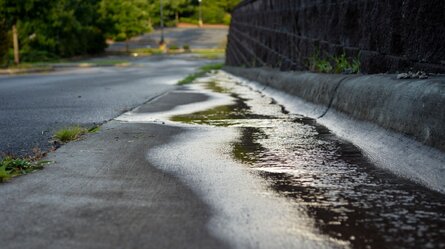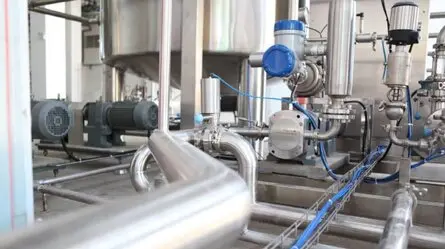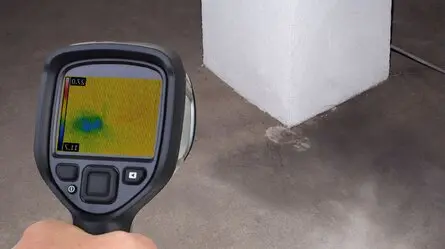Urban flooding costs Australian businesses over $500 million annually, impacting operations and causing significant property damage. As cities grow, the risks associated with stormwater mismanagement have increased, making effective solutions critical for commercial property owners. Stormwater management involves directing excess rainwater efficiently, reducing damage, and ensuring long-term resilience.
Proper planning goes a long way in reducing risks, avoiding property damage, and keeping your business running smoothly. Stormwater challenges often need solutions that fit the unique demands of each site. A single approach won’t work, given the diverse layouts, drainage systems, and environmental conditions of different properties.
Understanding Stormwater Management for Commercial Sites
For commercial sites, stormwater management is all about managing the flow and quality of rainwater. Systems are designed to capture, store, and redirect water, helping to prevent local flooding and lessen the environmental impact. Key elements include retention basins, infiltration systems, and effective drainage structures. Ensuring safety and compliance with regulations makes effective management essential.
In Australia, stormwater management is regulated at various government levels, with local councils setting specific requirements. Commercial property owners must adhere to regulations to minimise pollution and manage runoff effectively. Compliance often involves meeting discharge rate guidelines, contaminant treatment, and infrastructure maintenance.
Commercial property owners face several challenges, including high runoff volumes due to extensive impervious surfaces, regulatory compliance, and maintenance costs. Urban environments limit natural water infiltration, increasing the need for engineered solutions. Effective stormwater systems must consider the unique characteristics of each site to balance regulatory demands, functionality, and cost-efficiency.
Assessing Your Property’s Stormwater Needs
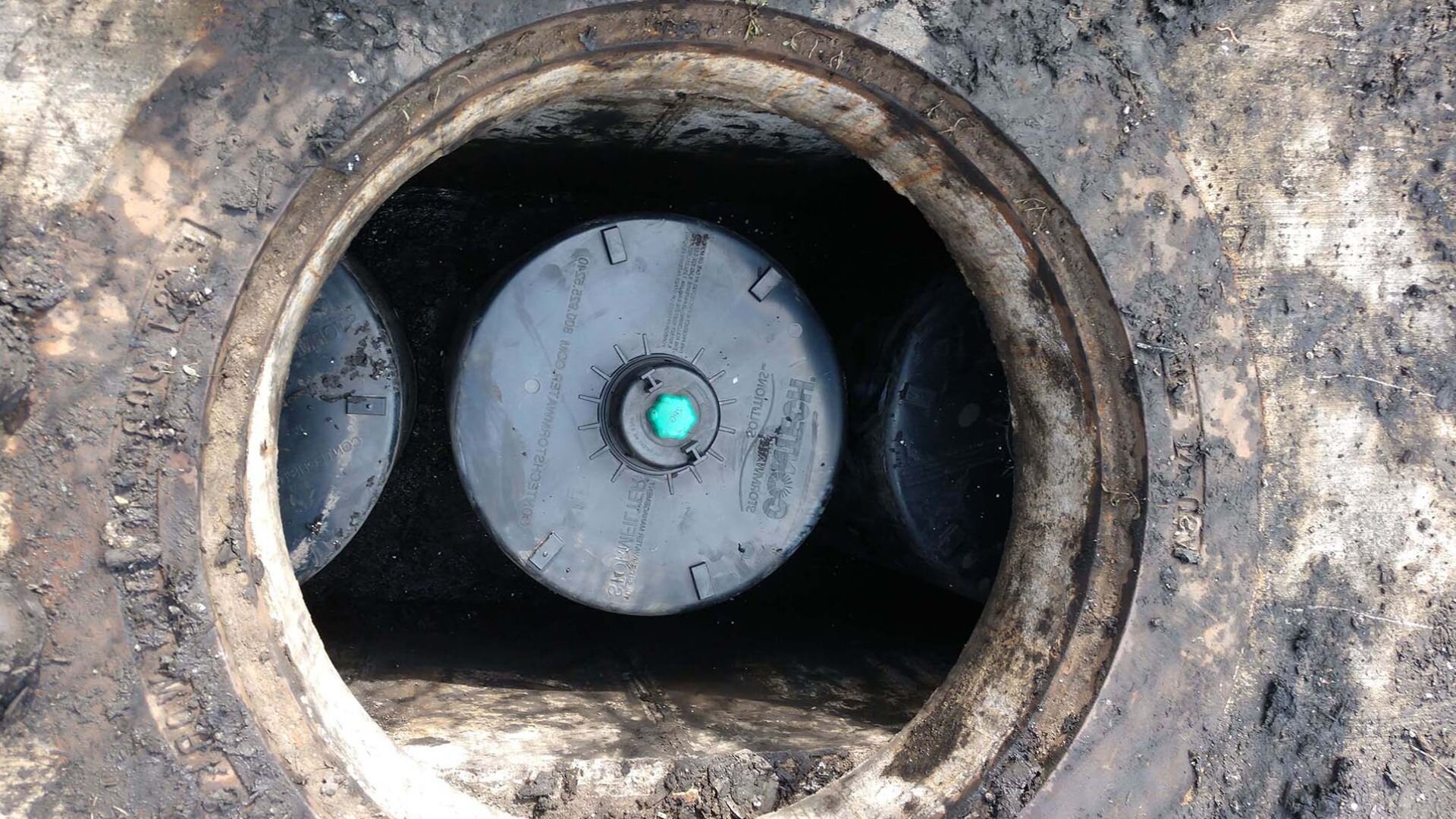
Assessing your property’s stormwater needs is a crucial step in managing runoff effectively. A thorough site analysis and risk assessment help identify potential problem areas and determine the best management strategies. Key aspects of the assessment include evaluating existing drainage systems, identifying points of water accumulation, and understanding how runoff may impact neighbouring properties.
Several factors affect stormwater management:
- Property Size: Larger areas generally need more comprehensive drainage systems.
- Local Climate: Regions with heavy rainfall require systems with higher capacity.
- Soil Type: Permeable soils support natural infiltration, while clay-rich ones might demand engineered solutions.
- Topography: Slopes can lead to quick runoff and need tailored controls.
- Existing Infrastructure: It’s crucial to ensure current drainage and utilities are compatible.
A professional assessment is vital for developing an effective stormwater management plan. Experts can provide insights that help mitigate risks, ensure regulatory compliance, and identify the most efficient solutions. Professional evaluations reduce guesswork and can lead to more sustainable and cost-effective outcomes, ultimately protecting the property and the environment from stormwater issues.
Innovative Custom Stormwater Solutions
Innovative custom stormwater solutions can significantly improve runoff management for commercial properties. These solutions are designed to suit different site conditions, contributing to both functionality and environmental sustainability.
Bioretention Systems
Bioretention systems, known as rain gardens, filter stormwater through vegetation, soil, and aggregate layers. They help remove pollutants and reduce runoff volume. These systems effectively capture rainwater from impervious surfaces and allow for slow infiltration, reducing pressure on local drainage infrastructure.
Permeable Pavement
Permeable pavement allows water to pass through its surface, reducing runoff and improving water infiltration. It is suitable for car parks, driveways, and walkways. Unlike traditional concrete or asphalt, this solution promotes groundwater recharge and can minimise the need for additional drainage structures.
Green Roofs
Green roofs involve planting vegetation on rooftops to absorb rainwater and reduce the volume reaching the drainage system. They offer benefits such as insulating buildings, improving air quality, and managing stormwater. Green roofs are particularly effective in urban environments, providing aesthetic and functional improvements.
Rainwater Harvesting
Rainwater harvesting involves collecting and storing rainwater for non-potable uses such as irrigation and cleaning. This reduces the volume of water entering stormwater systems while providing a supplementary water source for the property. It is an efficient way to decrease demand for potable water supplies and manage runoff.
Smart Stormwater Management Systems
Smart stormwater management systems incorporate sensors and automated controls to optimise stormwater infrastructure performance. These systems can monitor water levels, adjust flow controls, and provide real-time data to prevent flooding. They enhance system efficiency and adaptability, making them particularly valuable for complex commercial sites.
Designing an Integrated Stormwater Management Plan
Designing an integrated stormwater management plan involves combining multiple solutions to ensure comprehensive runoff control. Each property type, whether retail, industrial, or office complexes, has unique characteristics that require a tailored approach.
For example, an industrial site may benefit from a combination of permeable pavement and smart stormwater systems, while a retail property might focus on bioretention and rainwater harvesting. The goal is to use a blend of methods that address the site’s immediate needs and future growth.
Long-term planning ensures that stormwater systems remain effective as site conditions evolve. Scalability must be considered during the initial design phase to accommodate changes, such as expansions or increased rainfall due to climate variability.
Integrating these diverse solutions into a cohesive plan allows optimal performance, regulatory compliance, and environmental protection.
Implementation and Construction Considerations
Implementing a stormwater management system requires careful consideration of different construction approaches to minimise disruption and ensure success.
Phased Approach vs. Complete Overhaul
A phased approach works well for properties needing to stay operational during construction. It allows stormwater solutions to be implemented gradually, spreading costs and keeping disruptions low. On the other hand, a complete overhaul might suit sites that can afford temporary closings, providing faster completion and quicker advantages.
Disruption Management During Installation
Managing disruptions is crucial, particularly for commercial properties. Careful planning is needed to ensure minimal impact on daily operations. Effective communication with tenants, clear signage, and scheduling work during off-peak hours can all contribute to a smoother installation process. Maintaining access to critical areas is also essential to avoid inconvenience to staff, customers, or suppliers.
Collaborating with Stormwater Experts and Local Authorities
Collaboration with stormwater experts and local authorities is vital for successful implementation. Experts guide the most effective systems for specific properties, while local authorities ensure compliance with regulations.
Working with both can lead to a more streamlined approval process and reduce the risk of costly modifications or delays. A cooperative approach supports optimal system performance and regulatory adherence.
Maintenance and Monitoring of Custom Stormwater Systems
Ongoing maintenance and monitoring are critical to ensure that stormwater systems remain effective and compliant.
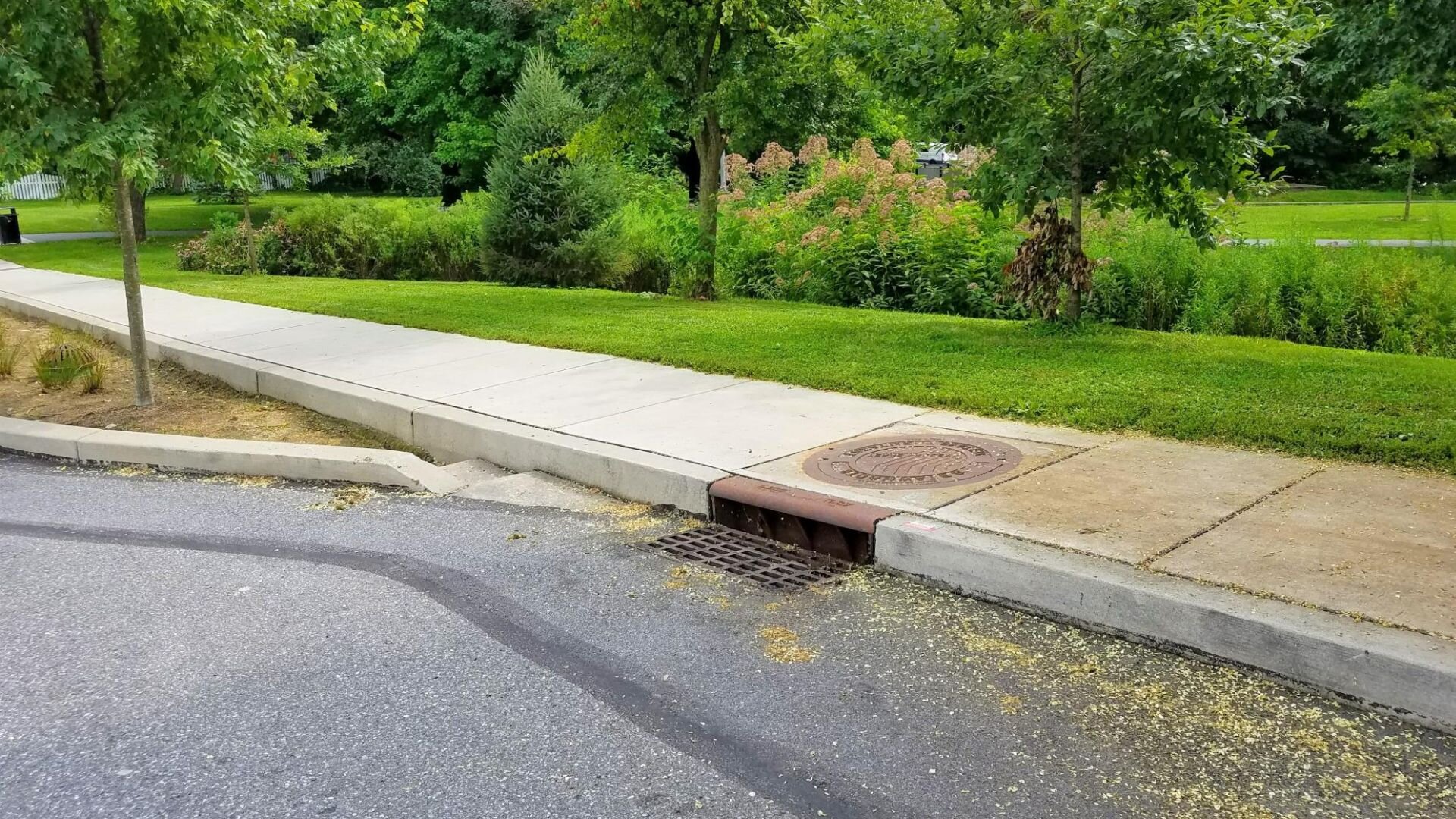
Regular Inspection Routines
- Scheduled inspections should be conducted to assess system components, such as drainage channels, inlets, and filters.
- Inspections can help identify blockages, erosion, or other system performance issues.
- Routine assessments are essential to detect potential problems early and prevent costly damage.
Preventive Maintenance Strategies
- Regular cleaning of gutters, drains, and basins helps maintain flow capacity and prevents clogging.
- Vegetation management, such as trimming plants in bioretention areas, ensures these systems function effectively.
- Sediment removal from permeable pavements and retention systems maintains their infiltration ability, preventing water pooling and surface damage.
Leveraging Technology for System Monitoring
- Smart monitoring systems, incorporating sensors and automated alerts, provide real-time information on water levels and flow rates.
- Data collected from sensors can be used to optimise maintenance schedules and prevent failures.
- Technology-driven monitoring ensures systems remain responsive and adaptable to changing weather patterns and property conditions.
The Financial Picture: Costs and Benefits
Financial considerations are a significant aspect of implementing stormwater management solutions. Understanding the costs and the potential economic benefits helps property owners make informed decisions.
Initial Investment Considerations
The initial investment for stormwater management depends on the complexity and scale of the solutions required. Factors like site conditions, selected technologies, and installation needs will influence costs.
While some solutions, such as porous pavements and smart monitoring systems, require higher upfront expenditures, they often provide significant long-term benefits. Careful planning and budgeting for initial installation are essential for effective stormwater management.
Long-term Savings and Return on Investment
Stormwater management systems can deliver long-term financial savings through reduced flood damage, lower maintenance costs, and the reuse of captured rainwater. Investing in appropriate infrastructure reduces the risk of costly disruptions and ensures compliance with environmental regulations, avoiding potential fines. The long-term return on investment is seen in the improved resilience of the property, the reduction of water bills, and fewer operational disruptions.
Available Grants and Incentives for Stormwater Management in Australia
Several grants and incentives are available in Australia to support the implementation of stormwater solutions. Many local councils and state governments offer funding or rebates to encourage sustainable stormwater practices. Property owners should explore these opportunities to reduce the financial burden of installation and enhance the feasibility of advanced stormwater systems.
Your Next Steps in Stormwater Excellence
Effective stormwater management begins with proactive decision-making and a commitment to sustainable practices. This guide highlights the critical aspects of successful stormwater management: custom solutions, thorough assessment, and ongoing maintenance. Implementing these strategies helps in compliance and offers long-term financial benefits, such as reduced repair costs, minimised operational disruptions, and improved property value.
Proactive stormwater management protects your property against flooding, water damage, and other environmental issues. Taking the time now to assess your current systems can prevent significant problems in the future.
This includes identifying areas of improvement, upgrading outdated infrastructure, and implementing innovative solutions that cater to your property’s unique characteristics. Long-term planning and adaptability are crucial to ensuring that your stormwater systems continue to perform effectively.
For expert blocked stormwater services and tailored solutions, contact Woolf Plumbing today. Our team is ready to assist you in creating a resilient and effective stormwater system for your property. Whether you need a complete overhaul or specific upgrades, we provide customised approaches that meet your needs and ensure compliance with all relevant regulations.


